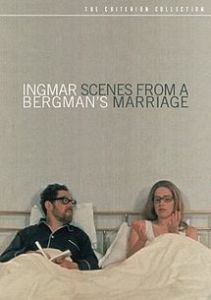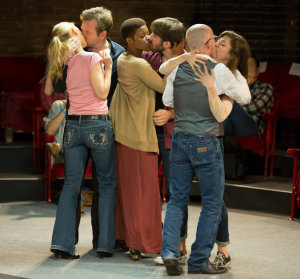Scenes From A Marriage, in Triplicate
In 1974, Roger Ebert called Ingmar Bergman’s Scenes from A Marriage “one of the truest, most luminous love stories ever made.” It makes us re-examine the nomenclature of love.
“His married couple are Swedish upper-middle-class. He is a professor, she is a lawyer specializing in family problems (for which, read divorce). They have two daughters, who remain off screen. They are intelligent, independent. She truly believes their marriage is a happy one (although she doesn’t much enjoy sex). One evening, he comes to their summer cottage and confesses that he has gone and fallen in love with someone else. There is nothing to be done about it. He must leave her.”
Bergman initially directed “Scenes” as a television series in 1973. The series was said to be responsible for the doubling of the divorce rates in Sweden, the year the series was released.
The following is a Wiki synopsis of the series’ episodes.
| 1 | “Innocence and Panic” |
|---|---|
| The story begins around Marianne’s and Johan’s 10th anniversary, when a reporter for a women’s magazine interviews them. Peter and Katarina visit later for dinner, and cruelly humiliate one another. | |
| 2 | “The Art of Sweeping Things Under the Rug” |
| Marianne tries to withdraw from a Sunday dinner with her parents but fails and realizes how difficult it is for her to let down other people’s expectations. Johan flirts with another woman at work. | |
| 3 | “Paula” |
| The couple retreat to their country house. Johan informs Marianne that he wants separation, and is leaving for Paris the next day with his lover, Paula. | |
| 4 | “The Vale of Tears” |
| Johan is disillusioned with Paula and revisits Marianne. They discuss their current lives, and Johan attempts to initiate sex, but Marianne is unwilling. He attempts to spend the night, but cannot sleep and leaves. | |
| 5 | “The Illiterates” |
| Marianne and Johan meet at his office to sign divorce papers, but Johan refuses. The two fight savagely. Johan declares that they are emotional illiterates. They sign the papers. | |
| 6 | “In the Middle of the Night in a Dark House Somewhere in the World” |
| Marianne and Johan have married other people, but are unhappy. Having met coincidentally in a theatre some time earlier, they have begun secretly seeing each other again. On the 20th anniversary of their wedding, they decide to spend time together at their country house. Finding that too strange, they go to a friend’s country house instead. There they discuss how much they have changed, with Marianne more self-conscious and Johan accepting his real abilities. When Marianne awakes panicking from a nightmare, Johan comforts her. | |
Based on the above series, The New York Theatre Workshop took the work even further by delving into the psychological drama in the version conceived and directed by Ivo Van Hove. The weaving of the time frame; the examination of the past, present, and future characters, the echos of thoughts, strains of music, emotional outbursts, The Ego, Id, and Superego of the couple: Everything becomes a holy triptych, much of which resides in hell.
There are three versions of each character and several others characters sprinkled in as catalysts. The theater is divided into three sections, each cut off from the other but joined by a windowed central room that the audience can view. Characters enter and leave the room from different time periods. The audience overhears the shouts and murmurs from other times while they watch “their present” which may be the couple at any one of the staged times of the relationship.
When each performance, about forty-five minutes each, is done, the audience, divided into three groups, is taken to the next scene where the performers re-enact their mini play. After the three audiences see all three plays, there is a half hour intermission for the stage to be reunited and put in the round.
The final scene, with the audience intact, is performed by the three sets of actors. Some parts are so filled with anger over the divorce, it is brutal. But there is a lesson that the characters learn: some connections can transcend hate.
The following video shows how the theater is set up for the performance. This building, deconstruction and reconfiguring of the stage must take place for every show, hence the long intermission.






what an interesting piece of theatre, did you see it?
Sure did, this is first hand.